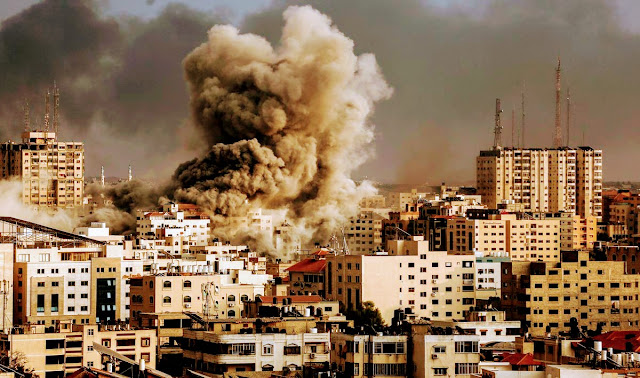Gaza-Israel issue refers to long-standing conflict and complex relationship between Gaza Strip, which is governed by the Palestinian political and militant group Hamas and State of Israel.
An ongoing war between Israel and Palestinian militant groups led by Hamas began on 7 October 2023, when militants invaded Israel from the Gaza Strip. It was met with an Israeli counteroffensive; Israel formally declared war on Hamas a day later. The event is part of the decades-long Arab–Israeli conflict, particularly the Gaza–Israel conflict.
Since 2006, Israel and Hamas have gone to war several times, while Palestinians and Israelis were engaged in a long-standing military and political conflict. Hamas avoided major engagements with Israel in 2022 and even most of 2023, when clashes killed 245 Palestinians and 32 Israelis. Instead, Hamas appeared to be covertly preparing for their major offensive, Operation Al-Aqsa Flood.
This attack began in the early morning with a rocket barrage of at least 3,000 missiles against Israel and vehicle-transported incursions into its territory. Palestinian militants breached the Gaza–Israel barrier, attacking military bases and killing civilians in neighboring Israeli communities. At least 1,300 Israelis were killed including 260 people who were massacred at a music festival. Unarmed civilian hostages and captured Israeli soldiers were also taken to the Gaza Strip, including women and minors. Hamas held a press conference claiming its aim was to attack Israeli military bases and instructions were given to not target civilians.
Here are some key points about this Gaza-Israel issue:-
1. Historical Context: Gaza Strip along with West Bank, has been a focal point of the Israeli-Palestinian conflict. The conflict has its roots in late 19th and early 20th centuries and it intensified in the mid-20th century with the establishment of the State of Israel in 1948.
2. Israeli Occupation: Gaza was occupied by Israel during Six-Day War in 1967. In 2005, Israel unilaterally withdrew its military and settlements from Gaza, but it retained control over the territory's borders, airspace and maritime access.
3. Hamas Rule: After Israeli withdrawal, the Palestinian political and militant group Hamas assumed control of Gaza in 2007 following a conflict with the Palestinian Authority. Hamas is considered a terrorist organization by Israel, the United States, and the European Union.
4. Blockade: Israel, with support from Egypt, imposed a blockade on Gaza in 2007, restricting the movement of goods and people in and out of the territory. This blockade has had a profound impact on Gaza's economy and living conditions.
5. Conflict and Wars: Gaza has witnessed several conflicts and military operations between Palestinian militant groups in Gaza, particularly Hamas and the Israeli military. Notable conflicts include Operation Cast Lead (2008-2009), Operation Pillar of Defense (2012) and Operation Protective Edge (2014).
6. Humanitarian Crisis: Gaza Strip has faced significant humanitarian challenges, including high unemployment, inadequate healthcare and limited access to clean water and electricity due to the blockade and conflict.
7. Peace Efforts: There have been numerous international peace efforts, including negotiations and ceasefire agreements. However, a lasting and comprehensive resolution to the Gaza-Israel conflict has been elusive.
8. Two-State Solution: Gaza-Israel issue is closely tied to broader discussions about a two-state solution, with an independent Palestinian state alongside Israel. Achieving this solution involves addressing Gaza's status and broader Palestinian-Israeli conflict.
9. International Community: The international community, including the United Nations, has expressed concern about the situation in Gaza and has called for a peaceful and negotiated resolution to the conflict.
Gaza-Israel issue is highly complex, deeply rooted in history and remains a significant challenge for regional stability and international diplomacy. It is marked by political, security, humanitarian, and socioeconomic dimensions.


